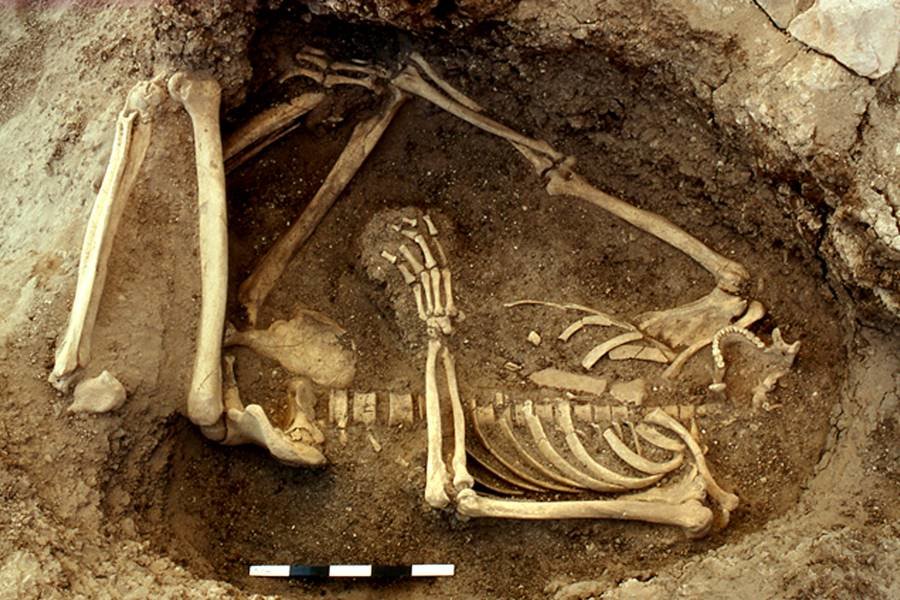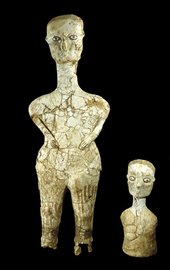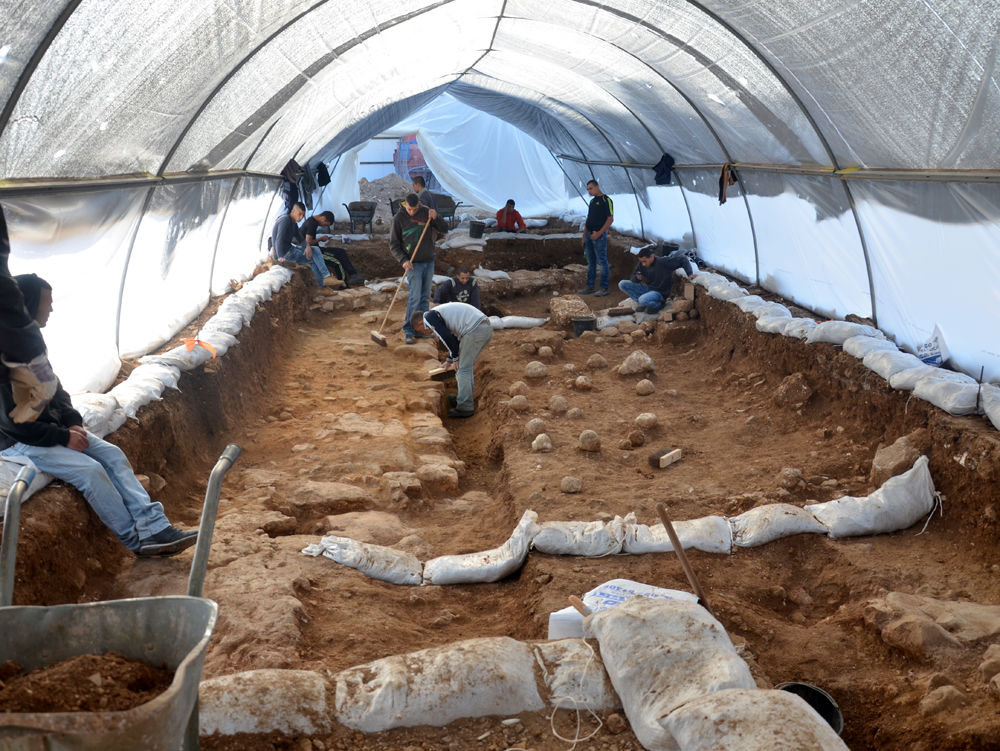
© C. Blair/The Ain Ghazal Archaeological ProjectA fossilized skeleton of a human who was buried beneath a floor in a family home in Ain Ghazal, a 10,000-year-old farming village in Jordan.
Beneath a rocky slope in central Jordan lie the remains of a 10,000-year-old village called Ain Ghazal, whose inhabitants lived in stone houses with timber roof beams, the walls and floors gleaming with white plaster.

© P. Dorrell and S. Laidlaw/The Ain Ghazal Archaeological Project Two of the sculptures recovered at Ain Ghazal. They likely represent mythical ancestors to whom the plastered skulls were directed.
Hundreds of people living there worshiped in circular shrines and made
haunting, wide-eyed sculptures that stood three feet high. They buried their cherished dead under the floors of their houses, decapitating the bodies in order to decorate the skulls.
But as fascinating as this culture was, something else about Ain Ghazal intrigues archaeologists more: It was one of the first farming villages to have emerged after the
dawn of agriculture.
Around the settlement, Ain Ghazal farmers raised barley, wheat, chickpeas and lentils. Other villagers would leave for months at a time to herd sheep and goats in the surrounding hills.
Sites like Ain Ghazal provide a glimpse of one of the most important transitions in human history: the moment that people domesticated plants and animals, settled down, and began to produce the kind of society in which most of us live today.
But for all that sites like Ain Ghazal have taught archaeologists, they are still grappling with enormous questions. Who exactly were the first farmers? How did agriculture, a cornerstone of civilization itself, spread to other parts of the world?



Comment: Related articles: